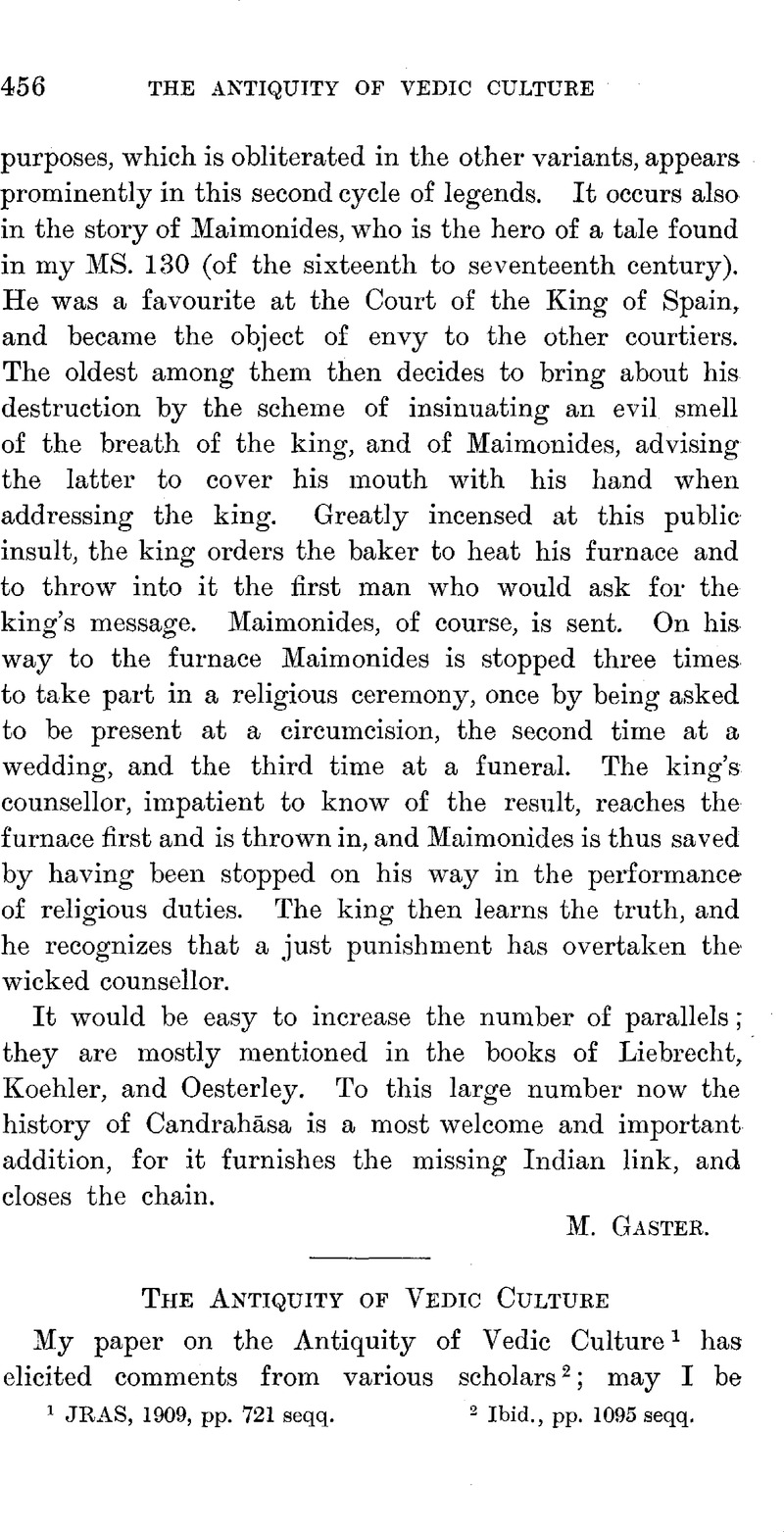Article contents
The Antiquity of Vedic Culture
Published online by Cambridge University Press: 15 March 2011
Abstract

- Type
- Miscellaneous Communications
- Information
- Copyright
- Copyright © The Royal Asiatic Society 1910
References
page 456 note 1 JRAS, 1909, pp. 721 seqq.
page 456 note 2 Ibid., pp. 1095 seqq.
page 457 note 1 Cf. Garuḍa and Aṛuṇa.
page 458 note 1 Professor Oldenberg says, p. 1098, note 1: “By deriving these gods from Iran rather than from India we may possibly account for the absence of Agni. It seems probable that the prominence of Agni in the Veda is of Indian, not of Indo-Iranian, growth.” In my opinion the prominence of Agni in the Veda is due to the fact that Agni (like Soma) was a god of the priests (in later times he is identified with the Brahmans), while Indra was the god of warriors or Kṣattriyas. Therefore the absence of Agni from the Mitannian inscription is easily accounted for by the fact that the Mitannian kings or their predecessors were warriors and not priests.
page 459 note 1 Popular gods usually vary even from tribe to tribe within the same people unless a uniform mythology is brought about by some powerful factor; as the Greek Pantheon was fixed by the Homeric poems, so the Vedic Pantheon by the Vedic Ṛṣis. If, therefore, contrary to my opinion, it could be proved that the pre-Zarathustrian religious system of the Iranians contained the principal gods of the Veda, then indeed we should have to assume that those Iranians had, at some time, been so wholly under the influence of Vedic culture as to adopt even the Vedic gods.
page 459 note 2 Professor Oldenberg corrects me in ascribing to Professor Meyer the opinion that those gods were Arian instead of proto-Iranian. If I must plead guilty, I may say in my excuse that the title of his paper: “The first appearance in history of the Arians,” and some passages, e.g. the one translated by Oldenberg on p. 1096, have misled not only me but also ther readers.
page 459 note 3 JRAS, 1909, p. 1107.
page 461 note 1 l.c, p. 1101.
page 461 note 2 It is misleading when Keith says (ibid.) that the “dhruva is admittedly an intruder in the Vedic marriage ritual”. Professor Winternitz, speaking of another detail of the marriage ritual, which is of unmistakably Indo-Germanic origin, points out that it is mentioned in two Gṛhya Sūtras only, and he adds the remark that this fact should caution us against drawing an inference as to the absence of a popular custom from the absence of a testimony for it in the oldest literature. Das altindische Hochzeitsrituell, in Denkschriften der Kaiserl. Akademie der Wissenschaften in Wien, vol. xl, p. 177.
page 462 note 1 The phrase dhruvasya pracalanam in Maitrī Upanisad, i, 4, has been regarded as evidence that the motion of the polar star had become known at last. But this is a mistake. The shaking of Dhruva is mentioned among other portents which were apparently supposed to occur at the end of a Kalpa: śoṣaṇam mahārṇavānām, śikhariṇām prapatanam, vraścanam vātarajjūnām. We are here already in presence of Puranic cosmology; note the cords of winds by which the stars are fastened to the Dhruva, see Viṣṇu Purāṇa, ii, 12, 24. For the Purāṇas Dhruva (Auttānapada) seems to be the Pole, as guardian of the celestial bodies; and the star near him is his mother Sunīti or Sūnrta, see Viṣṇu Purāṇa, i, 12, 95.
page 463 note 1 See Festgruss an Rud. von Roth, 1893, pp. 72 seqq.; ZDMG., Vol xlix, p. 228; vol. 1, p. 70.
page 463 note 2 Sāyana's commentary runs thus: dakṣinata uttarato vā vikṣepavaśān na calanti, kiṃtu niyamena śuddhaprācyām evo dyanti.
page 464 note 1 See ZDMG., vol. xlix, pp. 220 seqq.; vol. 1, p. 72.
- 1
- Cited by




